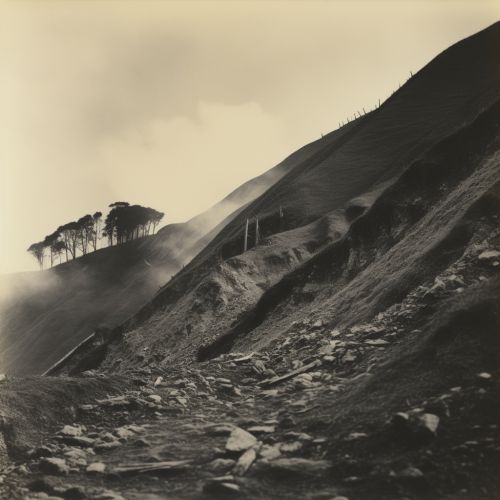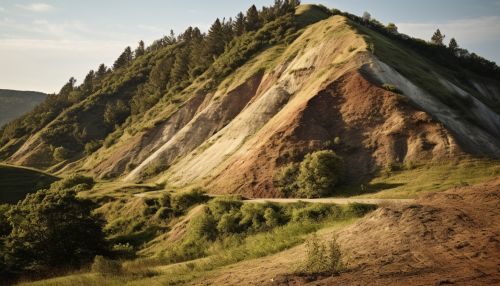Reverse fault
Introduction
A reverse fault is a type of structural geological feature that occurs when the crust of the Earth's surface is subjected to compressive stress. This stress forces one block of rock to move upwards relative to the adjacent block, resulting in a steep, often nearly vertical fault plane.


Formation
Reverse faults form in areas where the crust is being compressed, such as at convergent plate boundaries or in the deep crust of continental interiors. The compressive stress causes the rock to deform, and if the stress is greater than the strength of the rock, a fault will form. The block of rock above the fault plane, known as the hanging wall, moves upwards relative to the block below the fault plane, known as the footwall.
Characteristics
Reverse faults are characterized by a steep, often nearly vertical fault plane, and the movement of the hanging wall upwards relative to the footwall. This movement can result in the formation of mountain ranges, such as the Himalayas, which were formed by the movement of the Indian Plate into the Eurasian Plate, causing a series of reverse faults that pushed the crust upwards.
Types of Reverse Faults
There are two main types of reverse faults: low-angle reverse faults, also known as thrust faults, and high-angle reverse faults.
Low-Angle Reverse Faults (Thrust Faults)
Thrust faults are a type of reverse fault where the fault plane is at a low angle or nearly horizontal. They are common in areas of intense compressive stress, such as at the boundaries of converging tectonic plates. The Appalachian Mountains in the eastern United States are an example of a mountain range formed by thrust faulting.
High-Angle Reverse Faults
High-angle reverse faults are characterized by a steeply inclined fault plane. They are less common than thrust faults, but can still result in significant uplift and the formation of mountain ranges.
Effects of Reverse Faulting
The movement of rock along a reverse fault can have significant effects on the landscape. The uplift of the hanging wall can result in the formation of mountain ranges, while the downward movement of the footwall can create low-lying areas or basins. In addition, reverse faulting can cause earthquakes, which can result in damage to buildings and infrastructure, and pose a risk to human life.
Examples of Reverse Faults
There are many examples of reverse faults around the world. Some of the most notable include the Main Central Thrust in the Himalayas, the Lewis Overthrust in Montana, and the Moine Thrust in Scotland. Each of these faults has resulted in significant uplift and the formation of mountain ranges.
